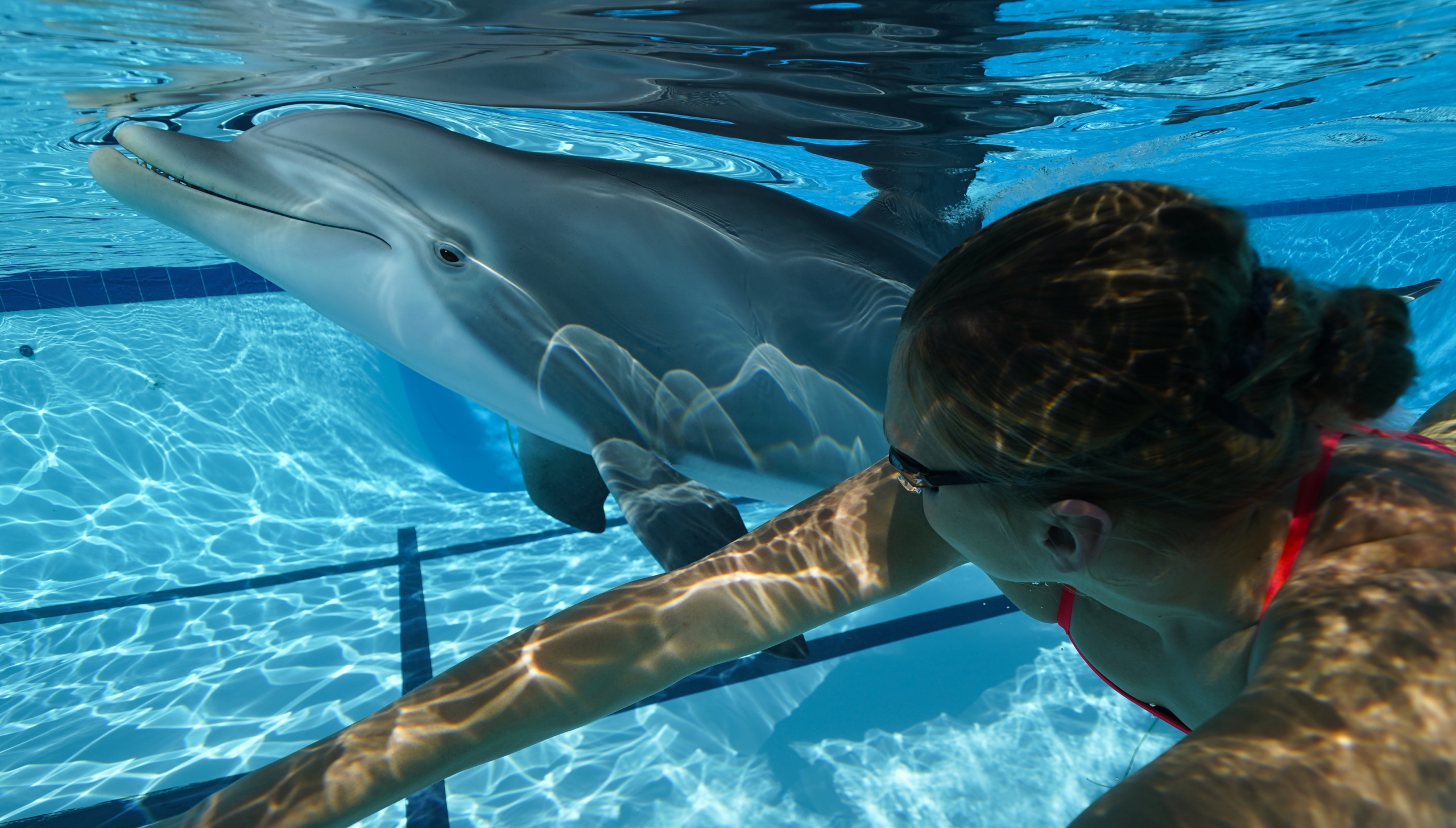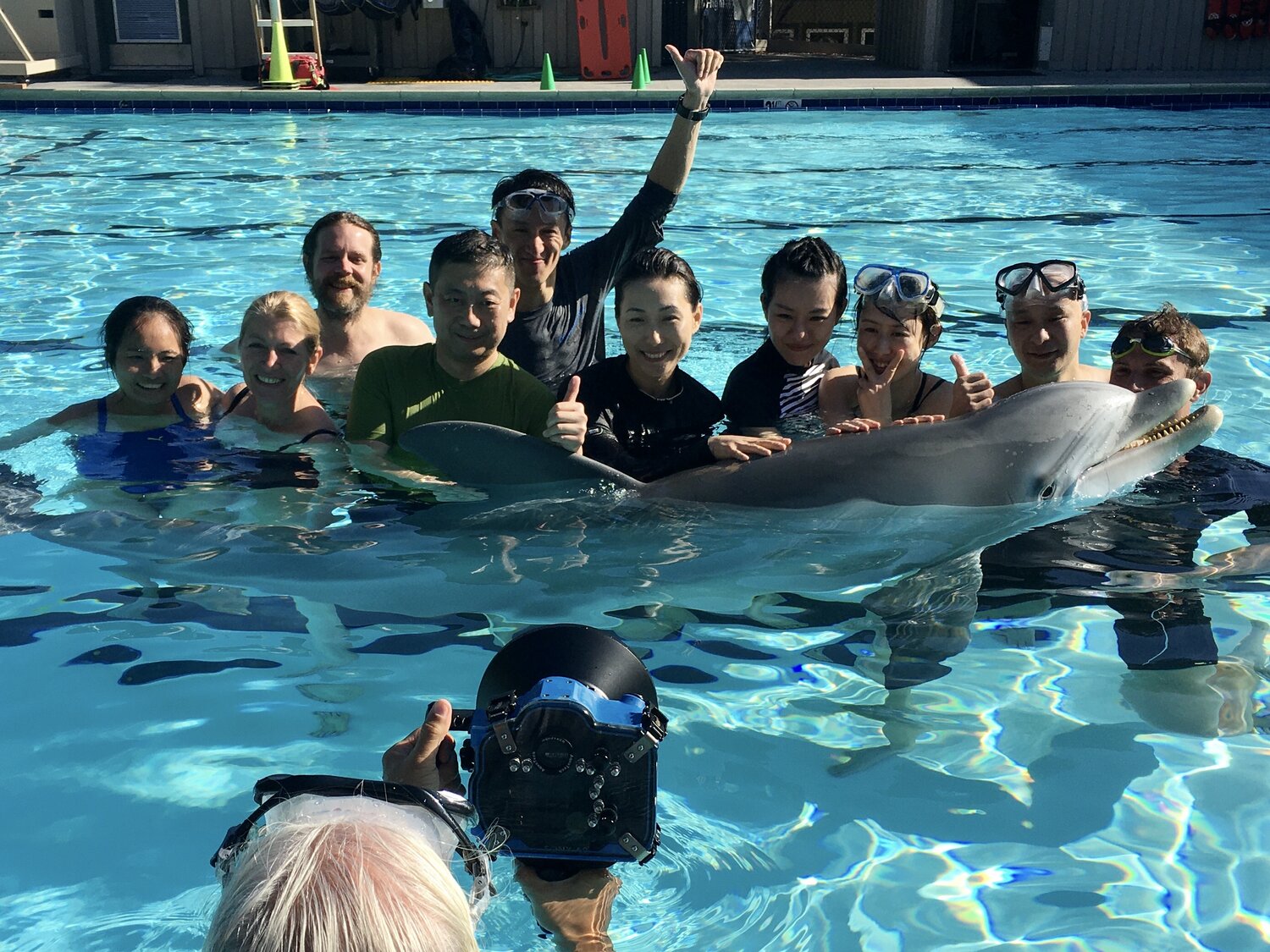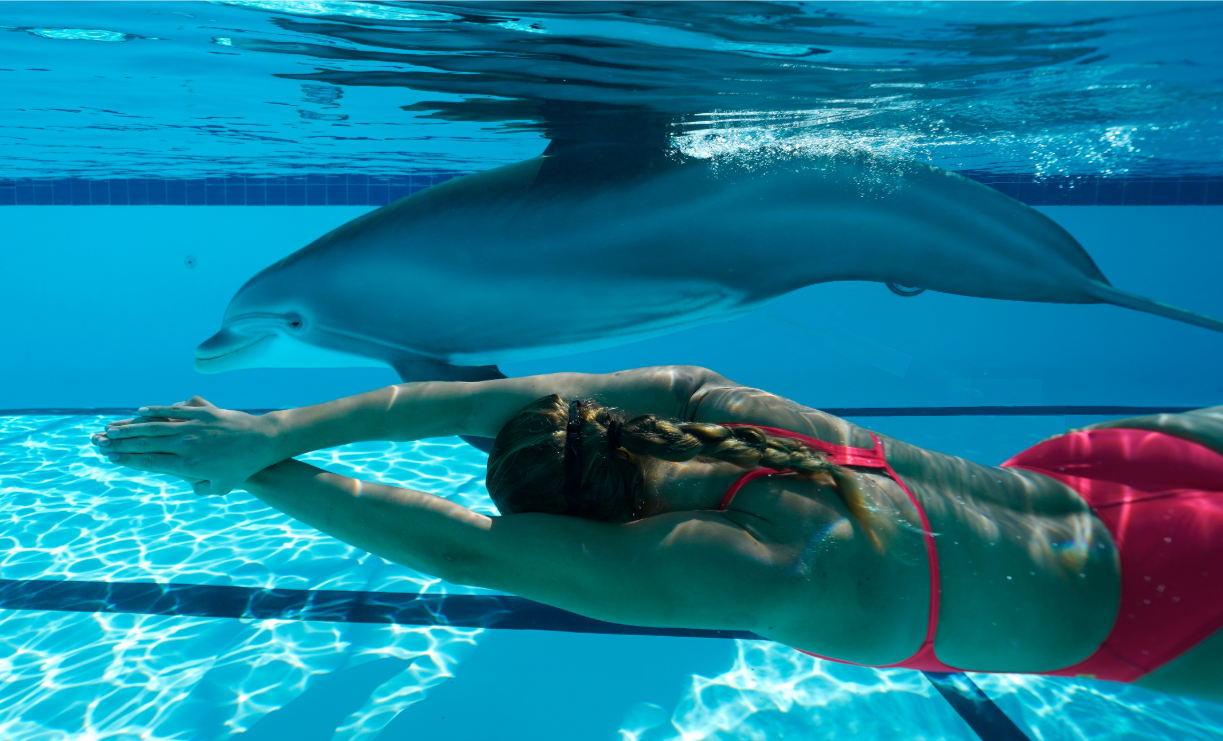Imagine, if you will, that David Attenborough or Jacques Cousteau was put in charge of a technologically advanced theme park like the one on the TV series Westworld, offering visitors a plethora of robots to interact with that are so compellingly lifelike as to be indistinguishable from the real thing.
Now imagine that, instead of an old American West setting like Westworld, this high-tech theme park was a robotic version of SeaWorld, filled with dozens of intelligent (or, at least, artificially intelligent) marine mammals, from dolphins to orcas, that look and act just like their ocean-dwelling counterparts. But, you know, without the need to take these animals out of their natural habitats and put them into cramped tanks for our amusement.
That could be the future of marine parks — and it’s one that San Francisco-based engineering company Edge Innovations wants to help make science reality instead of science fiction.
From movies to theme parks
“One of my first jobs out of college was working on Raiders of the Lost Ark, laying on my belly, pulling rubber snakes on a monofilament fishing line,” Roger Holzberg, creative director at Edge Innovations, told Digital Trends.
Holzberg started out his career in movies and is representative of perhaps the last generation of truly practical VFX folks in Hollywood, before things shifted profoundly with the arrival of computer graphics. That’s the story of Edge Innovations as well, which Holzberg became involved with back in the 1990s when he was a vice president at Walt Disney Imagineering. Edge Innovations, founded by a man named Walt Conti, was a leader in the motion picture animatronic business for some 30 years. “It really became the go to place for any time you needed something animal-like to move in the water,” Holzberg said.
Remember the humpback whales in Star Trek IV: The Voyage Home? Those were Edge’s. So was the orca in Free Willy. And the sharks in Deep Blue Sea. And the swordfish in The Perfect Storm. And the anaconda in, well, Anaconda.

When Hollywood began focusing less on animatronic models (essentially, lifelike robots), Edge pivoted increasingly to serve the theme park market. Theme parks have been using animatronic animals for years. In the early 1960s, the first audio animatronics debuted at Disneyland in the form of the Enchanted Tiki Room’s Tiki Birds. Things have only ramped up from there. The difference between the old-school animatronics and the newer kind developed by Holzberg and the folks at Edge Innovations comes down to their freedom of movement.
“You know, in traditional theme parks, there are lots of animatronic figures that run the same show cycle every 15 minutes that a car or walkthrough happens in front of a little presentation stage,” Holzberg said.
In the late 1990s, Holzberg helped build an early animatronic dolphin that was capable of swimming in water, controlled by two human operators with four joysticks. The effect, he said, was so convincing that, at an early demonstration involving a SeaWorld-style live show, a member of the public called the cops on them.
“A woman in the audience ran out of the pavilion, through an emergency exit, setting off an alarm, and used her cell phone to call the Orlando [Florida] police and the Orlando SPCA, the Society for the Prevention of Cruelty to Animals,” he said. “[She told them] that Disney had put a real dolphin in the Living Seas Pavilion, that they had bolted a camera to its head, ran a wire to it, and put it in a costume — and that someone needed to come down there now and arrest people for cruelty to this animal.”
A marine park for robots
Eighteen months ago, Holzberg received a call from a theme park producer in New Zealand, who was doing some work for a Chinese company that was developing three new oceanariums in China. They had seen footage of the old 1990s dolphin robot and wanted to know if Edge Innovations could create a new dolphin robot that would take advantage of the various advances in robotics and A.I. since that original prototype was created.
“I started to think about it,” he said. “I had this deep conversation with my wife, asking what it would mean if we built animatronic versions of three different species for three large aquariums in China. My wife said: ‘Well, you’ll have kept perhaps 100 large animals from being taken out of the wild and put in an aquarium. That means you’ve changed the history of those species.’”
The idea struck Holzberg as profound. “I’m an ocean person,” he said, getting a little choked up as he spoke. “I picked up the phone and called Walt and said, ‘let’s figure out a way to support this effort, and make it work.’”
This is what they have been working on ever since. The results, he said, are impressive. The robotic dolphin weighs 550lbs, is 8.5-feet long, and has realistic skin that’s made of medical-grade silicone. It has enough battery to swim for eight to 10 hours on a single charge, and shows impressively dolphin-like behavior in everything from its curiosity when it encounters an object of interest to its movement and tendency to surface four times a minute in order to breathe.
The dolphin can operate in two modes: An exhibition mode in which it swims around exploring its environment, and a show or education mode in which it can be controlled by an “animator” with a joystick. One of the things its A.I. does is to ensure that it maintains and holds buoyancy at all times. “That’s a big deal for a 560-pound, underwater, remote-operated vehicle that just happens to be powered with fins and rudders instead of a propeller,” Holzberg said.

The robot costs between $3 million and $5 million. Holzberg acknowledges that this is pricey but also points out that, over time, the cost works out in the favor of the machine mammal. “The cost of acquisitions for an animatronic creature versus real-life creatures is significant at the onset,” he said. “It costs a whole lot more to develop and train and utilize an animatronic animal than a real one. But over 10 years, when you consider the animal husbandry, feeding, water circulation, temperature control, waste disposal, veterinarian bills, et cetera [for a real, live animal], things change. Over a [decade-long] cycle over three large attractions in three aquariums, it makes the animatronic choice far, far, far more cost-effective.”
Coming soon to a tank near you?
As with many things this year, Edge’s robot dolphins hit a bump in the tank during the pandemic. “COVID, unfortunately, put a big pause button on the project — in terms of both the construction of the aquariums in China and the development of the software and the prototypes,” he said. We can’t go out and test in public pools any more. My best guesstimate is that the dolphin is about 18 months away from the time that we have a vaccine [for coronavirus].”
Holzberg said that it is important not to “demonize” the marine park industry as a whole as people reevaluate their opinions on caged animals. While there is certainly ample cause for condemnation in some cases (documentaries like 2013’s Blackfish cast a sobering eye on some of the abuses), he notes that many working in the industry have also done good work when it comes to conservation efforts.
“Our goal at the highest level is not to make [this] industry go away, but to help them reimagine the way they do their entertainment and their education,” he said.
Holzberg likened it to the automotive industry. “There’s no question that, when it comes to fossil fuel emissions and carbon footprint, the automobile industry is hurting the future of planet Earth,” he said with a pause. “But you can’t shut off automobiles. So there are a number of automobile companies that have put together timelines for converting their existing businesses from fossil fuel businesses to electric businesses. I think the marine park industry has the ability to reimagine itself in the same way. Our dream is that we get to be a substantial part of that.”





